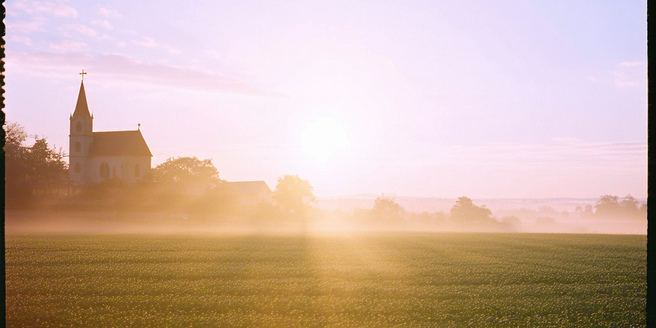Understanding the Intersection of Faith and Art
| Faith Tradition | Art Form | Shared Values |
| Christianity | Iconography | Symbolism |
| Islam | Calligraphy | Unity |
| Hinduism | Sculpture | Devotion |
| Buddhism | Mandalas | Meditation |
| Judaism | Temples | Heritage |
| Indigenous Beliefs | Totem Poles | Nature |
Historical Perspectives on Religious Art
Religious art has a history that transcends generations and societies, serving as both a cultural touchstone and a form of worship. In ancient times, art was a prescription for the divine, shaping societal values and norms through carefully crafted depictions and structure. Early Christians used catacombs to hide complex symbols and stories before more overt icons and murals became mainstream in churches. Islamic traditions emphasized geometric patterns and calligraphy, demonstrating divine beauty and infinite nature without directly depicting figures. As societies evolved, so did religious artistry adapting to cultural, political, and technological changes while preserving its sacred roles in ritual and worship. Today, historians continue to unravel the narratives behind these artworks which are not merely artistic expressions but windows into the history of civilizations, beliefs, and humanity itself.
The Role of Symbolism in Sacred Art
Symbolism in sacred art is a profound means of conveying divine truths and spiritual concepts that transcend ordinary language. Religious symbols act as visual metaphors, allowing believers to connect with the deeper mysteries of life and faith. From the lotus flower representing purity in Buddhism to the cross as a symbol of salvation in Christianity, these artefacts ignite contemplation and reflection. Icons and symbols are carefully crafted to evoke spiritual realities, offering a tangible expression of religious narratives and values. Through symbolic representation, sacred art bridges human experiences with the divine, creating a medium through which believers can experience a tangible connection to their beliefs. The recurrent use of symbols attests to their enduring significance as universal expressions of spirituality and theological ideas.
Exploring Iconography Across Different Faiths
Iconography serves as a powerful conduit for storytelling and preserving religious traditions across various faiths. Each faith harnesses unique iconography to convey complex theological messages, providing believers with a visual language to communicate sacred principles. In Christianity, the use of saints and biblical scenes in frescoes and paintings are a prevalent form of religious expression. In Hinduism, intricate carvings and sculptures of deities such as Vishnu and Shiva adorn temples and are central to worship. Meanwhile, Buddhist iconography, with depictions of the Buddha in various postures, conveys teachings of enlightenment and compassion. The Islamic faith, while abstaining from human depictions, emphasizes the beauty of geometric patterns and calligraphic artistry in its religious spaces. Each piece of iconography holds a deeper significance, continually inviting devotees to explore spiritual meanings and connections with the divine.
The Impact of Spirituality on Artistic Techniques
Spirituality deeply influences the techniques and styles employed in religious art, resulting in unique artistic traditions that resonate with spiritual audiences. The creative process itself is transformed into a spiritual practice as artists seek to embody sacred principles in their work. In medieval Europe, illuminated manuscripts combined artistry with devotion, where monks dedicated immense time and care to create intricate designs symbolizing divine light. In Zen Buddhism, the practice of ensō, or the painting of a circle, reflects the artist’s state of mind in a single brushstroke, embodying the principles of simplicity and balance. Techniques like iconography in Eastern Orthodox Christianity, where artists follow specific rules to maintain religious authenticity, demonstrate the harmonious interplay between spirituality and art. The spiritual essence captured in these artistic techniques continues to inspire and connect viewers with the divine, evoking reflection and awe across generations.
Modern Interpretations of Faith in Art
Contemporary artists are reimagining faith through art, merging traditional beliefs with modern influences to produce dynamic expressions of spirituality. These artists are pushing the boundaries of conventional religious art, infusing it with contemporary issues, and engaging with diverse audiences. Art installations, multimedia projects, and performance art have become new platforms for exploring faith, challenging viewers to reconsider their perspectives. For instance, multimedia artist Bill Viola’s video art taps into spiritual themes by exploring life, death, and transformation using modern technology. Similarly, Ai Weiwei blends activism and spirituality, questioning authority while reflecting on human rights issues. Modern interpretations of faith often emphasize inclusivity and social justice, expanding the narrative beyond the walls of religious institutions. These innovative artworks continue to elevate discussions about faith, spirituality, and the role of religious art in an ever-changing world.
Influence of Religious Texts on Visual Arts
Throughout history, religious texts have greatly influenced the visual arts, providing a repository of narratives, symbols, and themes for artistic exploration. Sacred texts serve as blueprints for inspiration, guiding artists in portraying divine dramas and spiritual truths in tangible form. The Bible in Christian tradition has inspired countless works, from Michelangelo’s murals in the Sistine Chapel to illuminated gospel manuscripts. Similarly, the Quran’s verses have led to the flourishing of Islamic calligraphy, transforming words into mesmerising artwork. Hindu epics like the Ramayana and Mahabharata have been depicted in temple friezes, dance performances, and paintings. These texts, infused with spiritual guidance and moral teachings, provide endless material for artists seeking to connect audiences with revered stories and lessons. The intersection of religious texts and visual arts not only preserves cultural heritage but also invites spiritual introspection and awareness.
Art as a Medium for Spiritual Reflection
Art holds the capacity to facilitate profound spiritual reflection, inviting viewers to engage with deeper questions of existence, identity, and faith. As a medium beyond words, art can transcend cultural and linguistic barriers to tap into the universal language of the soul. Through evocative imagery and symbolism, religious art prompts contemplation, helping individuals explore their beliefs, values, and place in the world. This reflection can be a deeply personal journey, offering solace, understanding, and spiritual awakening. Whether through the serene landscapes of Chinese ink paintings or the vivid depictions of biblical miracles, art serves as a sanctuary for introspection and meditation. In an era where distractions abound, art remains a vital conduit for connecting to the divine and exploring inner spirituality, offering a sacred space for quiet discernment and inner peace.
Community and Faith Through Artistic Collaboration
Artistic collaboration has emerged as an impactful means of fostering community and expressing faith collectively. Through community-driven artistic projects, individuals can unite across cultural and religious lines to share their spiritual experiences and create something greater than themselves. Collaborative initiatives, like mural projects or interfaith art festivals, offer platforms for discussion and mutual understanding, promoting dialogue around shared human experiences. In these spaces, people of different backgrounds can work together to honor religious diversity and embrace common spiritual aspirations. The process of creative collaboration in the context of faith not only produces visually captivating art but also strengthens communal bonds, cultivating empathy and unity. As communities around the world continue to adapt and evolve, artistic collaboration stands as a testament to how faith can inspire collective creativity, hope, and solidarity.
Future Trends in Faith-based Artistic Creations
In the ever-evolving landscape of art and spirituality, future trends in faith-based artistic creations are poised to merge tradition with innovation, offering new avenues for exploration. As technology continues to advance, digital mediums have provided unprecedented opportunities for artists to experiment with virtual reality, augmented reality, and interactive installations to communicate spiritual themes. Artists are increasingly embracing the fusion of art and technology to produce immersive experiences that engage audiences on a multisensory level, inviting viewers to step into reimagined sacred spaces. Additionally, as global interconnectivity grows, artistic expressions are increasingly reflecting diverse cultural perspectives, leading to hybridized creations that honor multiple faith traditions. Environmental themes are also becoming prominent, with artists integrating ecological consciousness into their work, encouraging dialogue on faith’s role in earthly stewardship. These trends indicate a vibrant future for faith-based art, where creativity knows no bounds and spirituality seeks new horizons.










